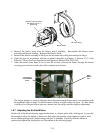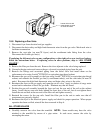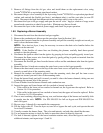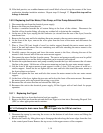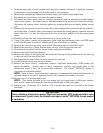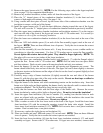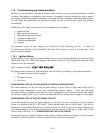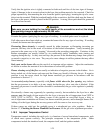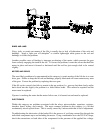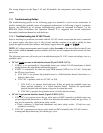1-19
1.10 Troubleshooting and Problem Isolation
Because it is not feasible to attempt to include in this manual every conceivable problem or trouble
condition that might be encountered, this section is intended to provide technicians with a general
knowledge of the broad problem categories associated with this equipment, and the probable causes
of each. With this knowledge, the technician should be able to isolate and correct any problem
encountered.
Problems you are likely to encounter can be grouped into six categories:
1. Ignition failure
2. Improper burner function
3. Improper temperature control
4. Computer malfunctions
5. Filtration malfunctions
6. Leakage
The probable causes of each category are discussed in the following sections. A series of
Troubleshooting Guides is also included at the end of the chapter to assist in solving some of the
more common problems.
1.10.1 Ignition Failure
Ignition failure occurs when the ignition module fails to sense a flame within the 4-second time delay
period and locks out. When this happens, the module sends 24 VAC through the interface board
alarm circuit to the computer.
CM7 computers display “IGNITION FAILURE.”
The three primary reasons for ignition failure, listed in order of probability, are problems related to:
1. Gas and/or electrical power supplies
2. Electronic circuits
3. Gas valve.
PROBLEMS RELATED TO THE GAS AND/OR ELECTRICAL POWER SUPPLIES
The main indicators of this are that an entire battery of fryers fails to light and/or there are no
indicator lights illuminated on the fryer experiencing ignition failure. Verify that the quick
disconnect fitting is properly connected, the fryer is plugged in with connector twisted and locked,
the main gas supply valve is open, and the circuit breaker for the fryer electrical supply is not tripped.
PROBLEMS RELATED TO THE ELECTRONIC CIRCUITS
If gas and electrical power are being supplied to the fryer, the next most likely cause of ignition
failure is a problem in the 24 VAC circuit. Verify that the drain valve is fully closed. The valve is
attached to a microswitch that must be closed for power to reach the gas valve (often, although the
valve handle appears to be in the closed position, the microswitch is still open). If the valve is fully
closed, refer to Section 1.11.1, TROUBLESHOOTING THE 24 VAC CIRCUIT.
Some typical causes of ignition failure in this category include a defective sensing wire in the ignitor
assembly, a defective module, a defective ignition wire, and a defective ignitor.



